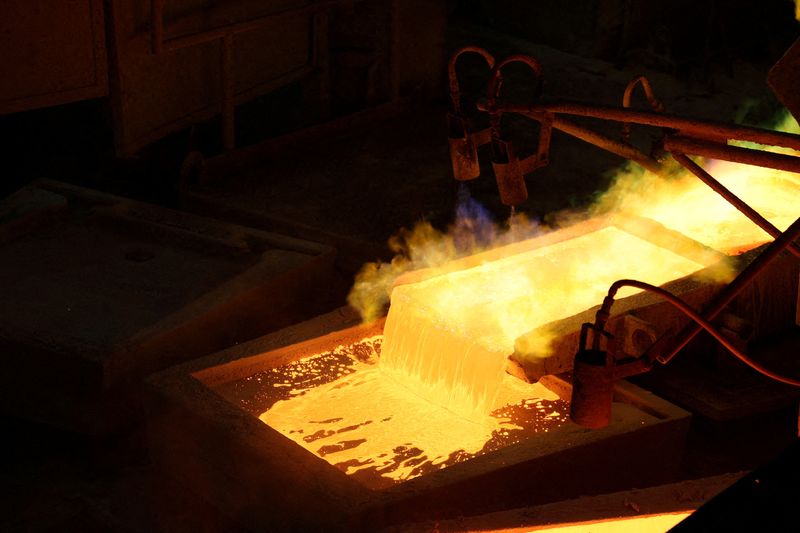By Andy Home
LONDON (Reuters) – Donald Trump’s victory in the U.S. presidential election has not led to a repeat of the explosive rally that followed his surprise victory in 2016.
That coincided with a market severely short of both futures and options, and led to a massive realignment of fund positioning.
This time, buyer was in risk mode, anticipating what appeared to be a close call outcome. Fund managers were net long copper ahead of last week’s election, but only modestly.
Moreover, the market’s focus has been as much on China as on the US, as the other major event last week was the meeting of the Standing Committee of the National People’s Congress (NPC) of China.
The resulting $1.4 trillion package to ease the local government’s “hidden debt burden” disappointed the metal bulls who were looking for something much stronger from the Chinese cabinet.
As for Doctor Copper, the key question surrounding a second Trump presidency is whether the threat of tariffs will prompt China to do more to fuel its sputtering growth engine.
ELECTION WEEK Wiggles
Copper’s price reaction to the US election was revealing in what it said about the market’s real focus, namely China.
The three-month copper price on the London Metal Exchange fell 4.1% on Wednesday, in what appeared to be a knee-jerk reaction to the strength of the US dollar in the wake of the election results.
By late Thursday, copper had recovered almost all of its losses as traders gambled that the Trump tariff threat on Chinese exports would encourage the NPC Standing Committee to open the stimulus taps.
Friday’s announcement of what is essentially a debt swap between central and local governments undermined positive expectations and triggered another sell-off.
Copper closed at $9,443.50 per tonne on Friday, marking a weekly loss of 1.3%. Although trading was volatile, the net weekly change was small and a far cry from the turbulence of 2016.
The fund’s positioning was much lighter this time in the run-up to elections that seemed too close to call. Money managers had a modest net long position of 20,714 contracts on the CME copper contract at the end of November 5. That was down sharply from 41,127 contracts at the beginning of October.
TURBULENCE RATE
Copper clearly doesn’t know how to price the bearish prospect of Trump’s promised 60% tariffs on Chinese goods and the potential bullish offset of more urgent stimulus from Beijing.
Tariffs, which are still several months away, are unlikely to make much difference to direct metal flows from China to the United States.
The Biden administration has already tripled tariffs on imports of Chinese aluminum and steel products to 25% in response to growing Chinese exports.
Canada has done the same and imports from Mexico, which has been accused of being a transshipment point for Chinese metal, must now come with a certificate of analysis proving that it is not of Chinese origin.
The bigger question is the potential impact on the broader Chinese economy, which appears far more vulnerable to a US trade war than was the case eight years ago.
Therefore, Copper’s immediate response to the US election results was to seek a response from Beijing.
The result was a debt restructuring, which, while positive, is unlikely to change growth in the short term.
The US election may have provided some distraction, but copper’s gaze has fully returned to the world’s largest metal user.

Metal bulls hope that a change of government in Washington will trigger a change in stimulus policy in Beijing.
The opinions expressed here are those of the author, a columnist for Reuters.


